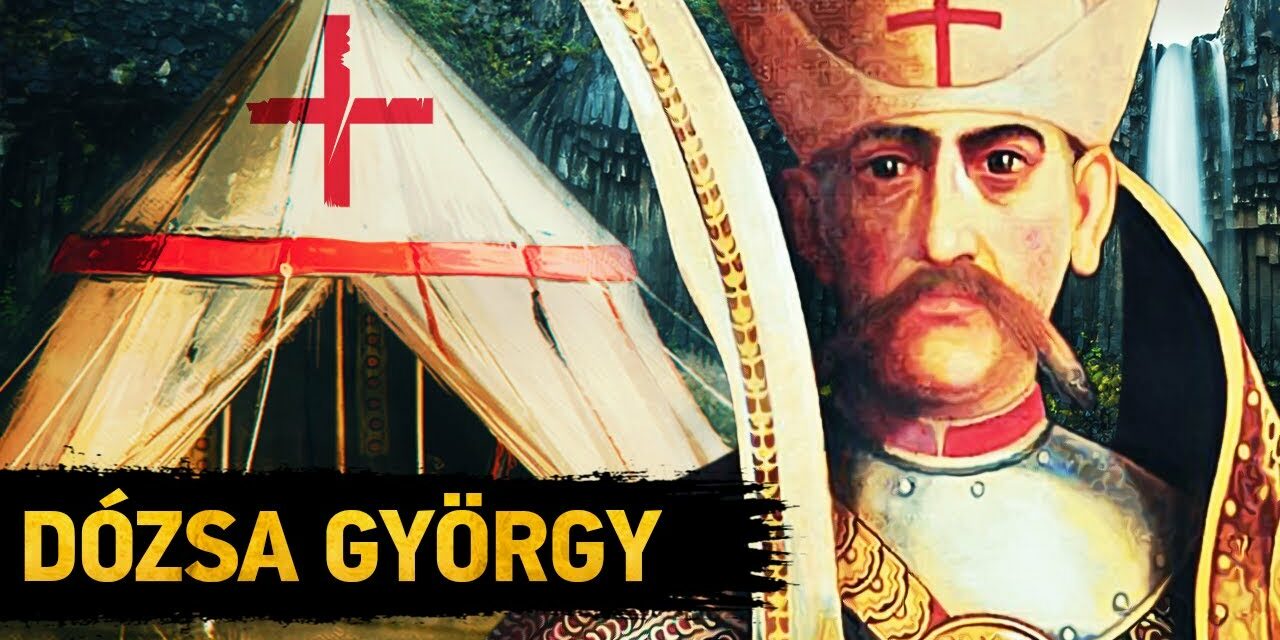"A nation that does not know its past does not understand its present, and cannot create its future!"
Europe needs Hungary... which has never let itself be defeated.
Death of Matthias. The difficulties of succession to the throne
One of the greatest personalities of Hungarian history passed away at the age of forty-seven, amid great pain. Already at the moment of the king's death, the news that Mátyás had been poisoned spread. Considering that among the candidates for the throne, the king's death was most Beatrix , she was suspected of administering the poison.
20th century medicine - based on Bonfini's description - came to the conclusion that the king was killed by gout caused by gout. But this is also just a hypothesis, poisoning is not excluded either. The latter was established by a professor of medicine in Vienna. In May 1489, Mátyás describes in a confidential letter - which he addressed to Prince Alfonso of Calabria - that "the queen wants to ensure that after our death ... she becomes our successor in the reign and takes the reins of government..." The Palm Sunday spent in Vienna only it was the culmination of the mine work that Beatrix had been conducting against her husband, Mátyás, for a year.
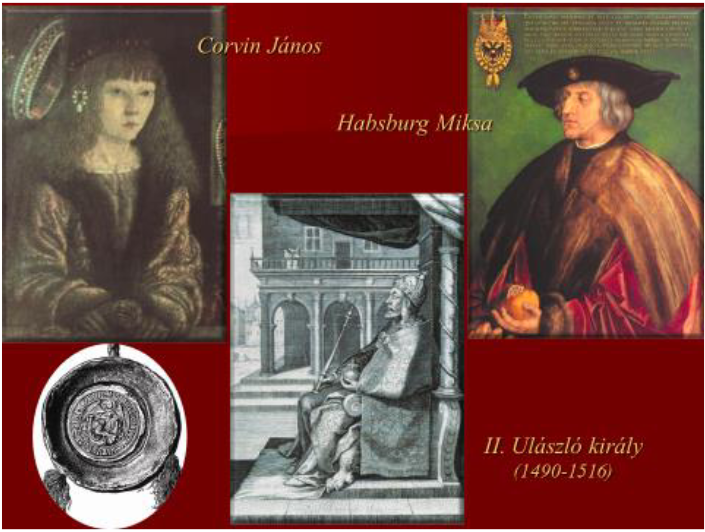
Beatrix had every reason to be ambitious, since King Matthias nominated
János Corvin However, given that according to the legal and moral standards of the time, a child born out of wedlock was considered illegitimate, Beatrix's claim to the throne was legitimate. However, let's not forget that Habsburg III. About Emperor Frederick - and his son Miksá - who, referring to the peace treaty of 1463, also laid claim to the Hungarian crown.
contender for the throne was the Polish king IV. Kázmér's two sons, Ulászló Jagelló and his younger brother, Albert János . Some of the Hungarian lords - including the two excellent generals, Balázs Magyar and István Báthori - supported the Polish candidate.
The king was symbolically buried in Vienna, and the body was transported to Buda by ship a few days later.
After that, the funeral procession accompanied the body of Mátyás to Fehérvár, where the grand funeral took place on April 25, 1490 . , Domokos Kálmáncsehi , instead of of the Esztergom archbishopric - the eleven-year-old Estei Hippolit . Bonfini described the funeral ceremony in detail, including the fact that János Corvin was at the head of the procession, followed by the country's barons and high priests. This is how Mátyás, the powerful ruler, one of the most significant figures in our history, the last king of independent Hungary, passed away. The memory of Mátyás lives not only in Fehérvár, Buda and Visegrad, but in the entire Carpathian basin and beyond. An authentic memory of his funeral is the parade of the "black army". The name, which had never been used before, was linked to the king's death. On the day of the funeral, Mátyás' soldiers wore black ribbons to express their grief and respect.
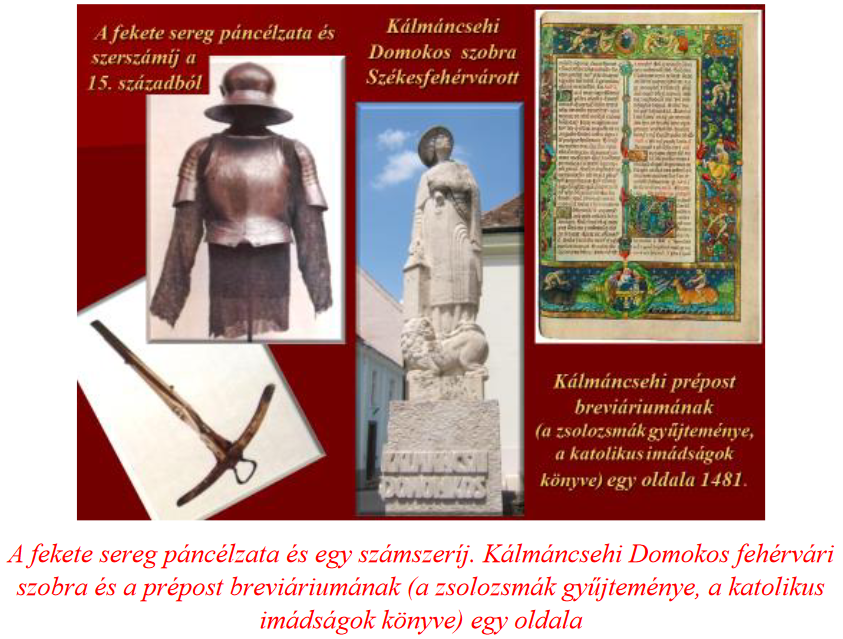
Mátyás did everything to keep his son in power. Since the young man born in 1473 could not take the name Hunyadi, he became János Corvin after the raven coat of arms of the family. The child was raised by his grandmother, Erzsébet Szilágyi . Mátyás did his son a disservice with his policy of property exchanges and against the barons, because after his death the anger of the nobles on Prince János . This did not make Beatrix's situation any better; from the moment she arrived in Buda, she encountered the dislike of most of the Hungarian nobility. Jagielló Ulászló , who was Mátyás' opponent from 1471 in the history of the previously discussed Czech wars, came to the Hungarian throne
László Dobzse's accession to the throne
After the death of Mátyás, the feud between Beatrix and János Corvin erupted into an armed conflict in the summer of 1490. In addition to weapons, the lords were also turned against each other by their political and financial interests. János Corvin with the Holy Crown and a significant part of Mátyás's treasures made his way to his southern estates. The army chasing him, Pál Kinizsi and István Báthori, inflicted a decisive defeat on János Corvin at Csantavér on July 4, 1490. The heir to the throne sent the Holy Crown back to Visegrád, which meant giving up his claim to the throne. (Mátyás's only son lived another fourteen years. In 1491, he renovated the Pauline monastery church in Lepoglava, which he had converted into a fortress church due to the Turkish threat. Between 1495 and 1499, he served as a Croat, while he had three children with his second wife, Beatrix Frangepán. (János Corvin died at the age of 31 and was buried in the church of Lepoglava, where one of his sons, Kristóf , was later laid to rest.)

The Hungarian lords were not disappointed in the controllability of King Ulászló.
The answer to all their requests was "throw, throw" "it's fine, it's fine". Here we note that the Czechs called their king "ox". The historical conditioning of the majority of Hungarians , that a king who destroyed Mátyás's strong country in a short time came to the Hungarian throne, must be interpreted in light of the facts. The fatal events of the 36 years that passed between Mátyás's death and the tragedy of Mohács, not only II. Ulaszló and his son, II. Lajos .
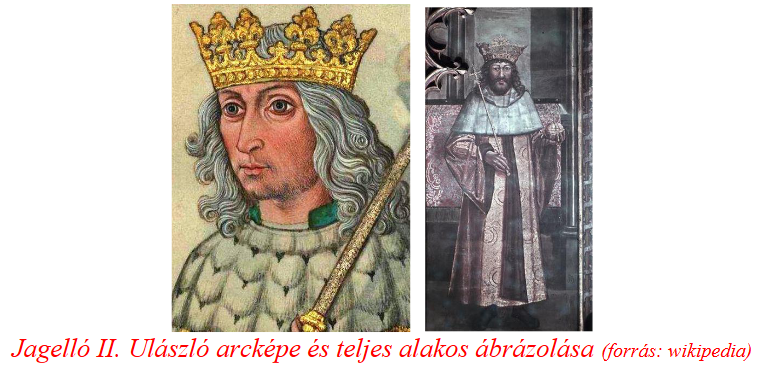
Because what do we know about it?
He was a weak-handed ruler, mostly yielding to all the wishes of the barons. He lost Mátyás's conquests, disintegrated the black army, and the full treasury was emptied in a short time. However, the king with 19 years of experience as a ruler , who previously defied Mátyas in the Czech wars, and who has international authority, won the trust of the Hungarian lords for a reason.
In the 1490s, however, the contradictory royal decisions did not serve the country's interests in all respects.
Among these is the fact that in 1491 he renounced the Austrian estates acquired by Mátyás with a stroke of a pen. apply for the Hungarian throne for a while Frigyes' son, Miksa, declared himself Hungarian, as he was born in Bécsújhely, in the "Hungarian tower". However, the Hungarian lords exercised the right of free choice and not the right of inheritance. This is how the Czech king of Polish origin, II. Ulaszló .

However, Ulászló also clashed
with István Báthori When the Szeklers complained about Voivode Báthori, the king took the voivodeship away from him. a big mistake. Because it is true that the new king yielded to Mátyás's strictness, which was a salvation for many nobles and the taxing common people, but in the following years this leniency took its toll. Ulaszló was the king of peace and justice. However, he lacked all the qualities of a knight-king, the recognition of the danger of the growing Ottoman power, which was increasingly threatening the country. He was alien to going to war and practicing martial arts. His reign did not even remind of the successes of Mátyás's foreign and domestic policy. His education, his knowledge of the geographical and ethnic composition of the Carpathian Basin, the thinking of the rich and the poor, was far from the knowledge of his predecessor. In short, we could say that he was not Hungarian. It should be known that the royal army was strong even in the first years of Ulászló's reign, but it was no longer effective, this army had no combat experience.
The court chancellery and the royal treasury
Misconception that II. Ulaszló's court would have been dominated by disorganization and headlessness. The royal council with the king at the head worked well, even the powerful and talented chancellor like Tamás Bakócz carried out Ulászló's will.
the problem did not arise from this, but from the financial problems of the Turkish advance weighing on the country, which consumed more and more money.

Mátyás's country was strong, and his successor was not burdened by financial problems. The sources of the troubles arose from the fact that Mátyás left almost everything to János Corvin. Thus, royal private estates and royal castles that brought substantial income did not exist in II. At Ulaszló's disposal. As a result of the throne wars that began in 1490, the king was in debt, which made him partially vulnerable. Most of the debt tied Ulászló's hands even after he had pretended to marry Beatrix, a widow much older than him. He seized his properties, and thus got money. Beatrix, by becoming queen again, stayed close to power. The king even repelled his younger brother, János Albert , who invaded the country from the north, claiming power for himself. The obstacles were removed, so Ulászló parted ways with the expensive black army from 1492, with the arrival of the era of peace. Saying that if there is no war, there is no need for soldiers. On the one hand, this exempted him from large sums of expenditure, but on the other hand, it made the country vulnerable. Disbanding the black army was not so easy, considering that the soldiers in heavy armor started looting for their unpaid wages. The king gave the order to disperse the smaller and larger troops.
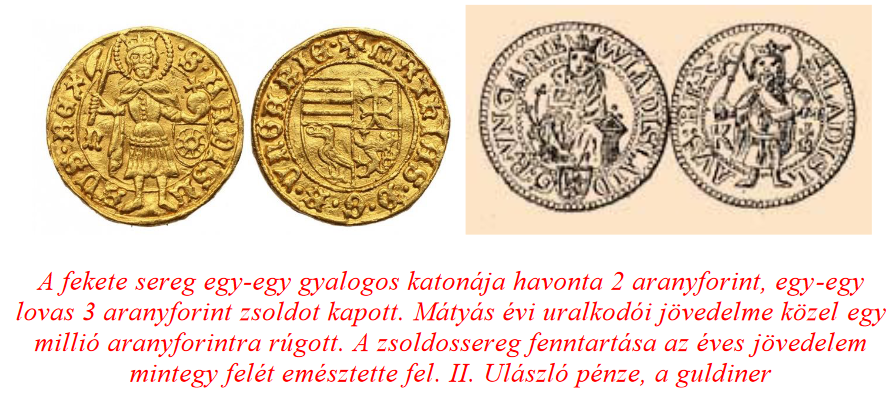
Although II. When Ulaszló was elected, he promised the state leaders that he would not collect the one-forint war tax, but he could not do otherwise. Sometimes he was forced to collect the tax twice a year. However, this weakened the king's position. Nevertheless, Ulászló had enough diplomatic sense to get his will through the parliaments. The treasury was almost always empty, because part of the incoming sums were taken by the southern border protection, and the other part by debts. (According to the well-known anecdote, the king was so poor that he bought his lunch at the market in Buda. He put fried meat in a loaf cut in two, which refers to the origin of the term "lacipecsenye" or "lacikonyha". This is not true, but it characterizes kort, the person of the ruler.) The problem was rather that neither the king, nor his advisers, nor most of the nobility were concerned with the Turkish danger, even though they knew that the Ottomans' goal was to occupy Hungary.
Cancer Decree - 1505
Among the numerous Hungarian parliaments held over a thousand years, one of the most cited was the so-called Rákos Decree of 1505. II. Ulászló had already ruled the Hungarian throne for fifteen years when the memorable national assembly took place. the leadership of the powerful János Szapolyai - who was voivode of Transylvania between 1510-1526 and later king of Hungary - the common nobility came together to enact legislation. At the regular national assembly, the nobility took a unanimous position that they would not accept a foreign claimant to the throne in the future. They insisted that the Hungarian throne could only be occupied by a national king.


Despite the royal decree, the Hungarian commoners appeared armed. Among the party supporters of János Szapolyai, 10 high priests, 53 regional governors and 125 county deputies were also present. The II. Dissatisfied with Ulaszló, the nobility unanimously declared that if no male heir was born from the king's legal marriage, then they would not recognize a daughter's inheritance. In this case, an election takes place, and they choose no one but a born Hungarian. The cancer decree never became law because none of the monarchs ratified it. From 1505, the "national party's" candidate for king was János Szapolyai, who would ascend the throne two decades later, in 1526.
Tamás Bakócz at the papal election - 1513
Tamás Bakócz (Bakács) may have been a wheelwright serf, judging from the family coat of arms. The young man born in Erdód (Szatmár county) entered the priesthood. Like so many people in Mátyás's country, the career of Bakócz, who received his doctorate in Kraków at the age of 22, quickly rose from the ranks of low-born but talented young people. In the 1470s, Bakócz already worked in the chancellery alongside Mátyás, and at the age of 42 he became the bishop of the diocese of Győr. From 1490, he received the title of chancellor and later became one of the crown guards. He was in his fifties when he was appointed bishop of Eger, but a year later he was already the archbishop of Esztergom. The great vocation of the Bakócz family is indicated by the fact that it was not only Tamás who rose to a high rank. Five of the Bakócz boys who rose from the ranks of serfs chose the priesthood, and several of them achieved high rank and wealth.

However, Tamás Bakócz reached the peak of his career when he traveled to Rome in 1513 with high hopes to take part in the papal election. He might have run for the throne of Saint Peter, but in the end the majority of the Italian cardinals chose a Medici, who took the name Leo X It would have been a big surprise if of Lorenzo de Medici ( Il Magnifico ) had not won the papal throne. He was the first Medici pope to be raised as a priest from a young age. Despite this, critical tongues and pens were directed at one of his predecessors, VI. to Alexander (1492-1503), the Borgia Pope. They "did a lot" for the reason that Rome, the Catholic Church, was in crisis and that the Reformation spread like wildfire. Márton Luther in 1517 . It can be assumed that he would have tried to put a stop to the events that plunged the papacy into crisis, not just by issuing a few bulls, as Leo X did, but with much stronger solutions.
The new Medici pope, in order to appease and at the same time remove his Hungarian opponent from Rome, made gestures towards him. On the one hand, he expanded Bakócz's powers as Primate of Esztergom, and on the other hand, he entrusted him with the organization of a crusade.
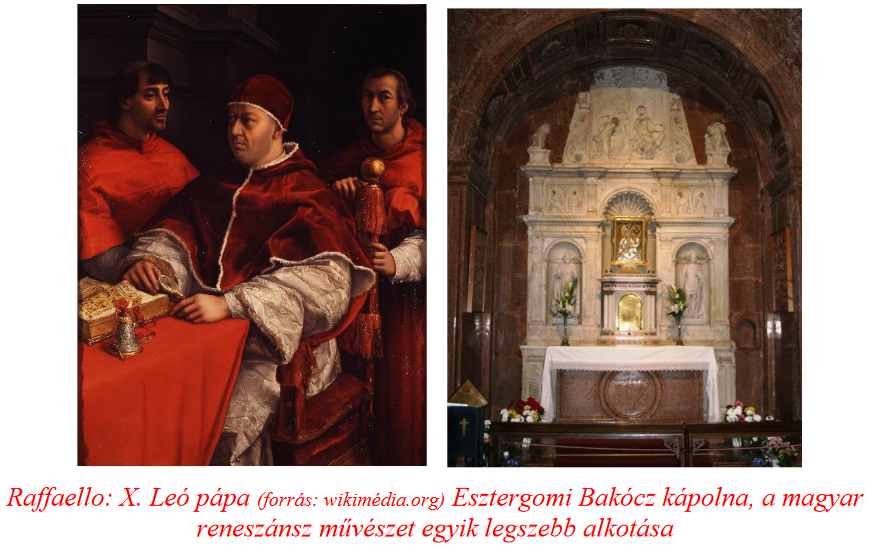
The peasant uprising led by György Dózsa - 1514
At the beginning of the 16th century, the fate of nearly four million serfs in Hungary took a turn for the worse.
The income of the serfs with whole lots even increased, but many of the serfs with half lots, who made up the majority, sank into the ranks of the poor. The common nobility prevented the serfs from moving and using the common lands (for example, the serf could graze his own animals on the land of the noble). Thus, the tension between serf and noble grew more and more. The appeal of Archbishop Bakócz brought about a significant change in this situation. Upon his return from Rome, the high priest announced a crusade against the Turks. In the spring of 1514, significantly more people than expected appeared in the camps set up in Buda and Pest - thanks to the deterioration of the living standards of serfs. Among others, György Dózsa , who was called before the king to receive his reward, arrived in Buda. In the southern ends, he won a duel against a famous Turkish wrestler. The news of the victorious swordsman reached the royal court. Considering that none of the nobles wanted to take on the role of leader of the campaign against the Turks, which was promised to be dangerous, it was suggested that György Dózsa should be the leader. This is how it happened that on April 24, 1514, St. George's Day, the mantle of leader of the crusades was spread over Doge's shoulders.

Bakócz entrusted the mobilization to the Franciscan monks, popular among the poor. A priest from Cegléd, Lőrinc Mészáros became the leader of the armies gathered in the eastern parts. Priest Lőrinc – as his followers called him – rallied the insurgents around Várad and became one of Dózsa's lieutenants. The Peasants' War lasted only between April and July 1514, but it became even bloodier. Self-destructive warfare is one of the black pages of Hungarian history. In addition to the peasantry, a large number of market town industrialists and merchants, and even small nobles, took part in the battles. In the beginning, the experienced, 72-year-old Bakócz did not count on the fact that peasants gathering in different parts of the country, discussing their deteriorating situation with each other, would add fuel to the fire. Discontent against their masters and the king grew. The main army that set out against the Turks already clashed with the nobles at Túr (Mezőtúr). Bakócz stopped the campaign after hearing the news. Dózsa and his fellow leaders had already refused to obey under the pressure of the disgruntled serfs.
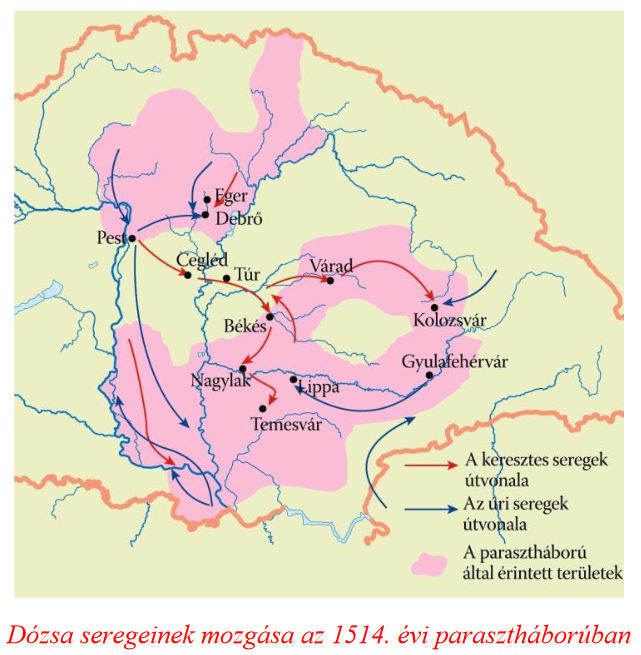
Transylvanian voivode István Báthori attacked the outposts of the peasants at Abátfalva, so hostilities turned into open war. Dózsa burned down Nagylak's castle, and captured Miklós Csáky, bishop of Csánád, and his companions. Dózsa, who numbered 10,000 people and, according to other sources, 30,000 insurgents, set out to occupy Timisoara. The serfs were busy draining the moats surrounding the castle when János Szapolyai arrived at the head of the 20,000-strong relief army. The murderous battle turned into a terrible revenge of the nobles. This determined the relationship between Hungarian social strata for centuries, which erected a wall between serf and noble. The best-known event of noble revenge is the execution of György Dózsa on a fiery throne.

Law book of István Werbőczy
The nobility took revenge, but they didn't want to completely displease the serfs, because then who would have cultivated the fields? Strict punishments were abandoned, but a one-day-a-week robot was introduced, as well as the deprivation of freedom of movement. István Werbőczy, who was later elected Palatine, included the interests of the common people in a uniform collection of laws, which, by the way, was never incorporated into the laws due to the resistance of the nobility. Despite this, the Tripartitum, or Three Book in Hungarian, was in use as the most useful collection of customary law until 1848, and even for the following hundred years.
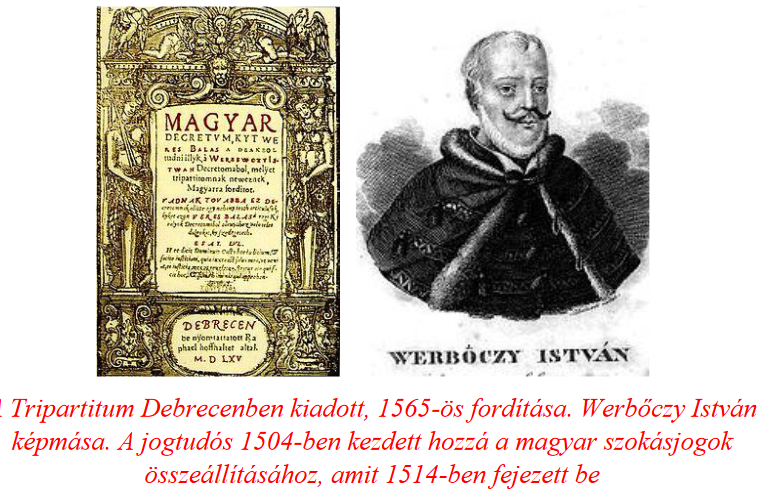
The 1st volume collects the sections of the Noble Private Law, the 2nd the Noble Court Law, the 3rd Civil and Serf Law and the peasant laws of 1514 in force at the time. The collection summarized the Hungarian legal system from the time of the Árpáds, especially from the Golden Bull. It is also worth noting of Bálin Hóman , according to which the Tripartite became a symbol of unity in Hungary, which was divided into three parts, i.e. "It held the political nation together, this is the great merit of the Tripartite Book."
The establishment of the Fuggers in Hungary
King Ulaszló's 26-year reign ended in 1516. The deterioration was not only caused by Turkish attacks, the Peasants' War, the constant financial turmoil, internal disunity, and the deterioration of the living standards of the peasants and other social strata. II. Ulászló made a fatal mistake when in Vienna in 1515 he put into effect the Habsburg-Jagiellonian marriage contract drawn up in 1506 on behalf of the Kingdom of Hungary. According to this, Emperor Miksa's grandson, Ferdinand, marries Anna Jagielló , Ulászló's daughter, and Ulászló's son, Lajos, marries Miksa's granddaughter, Mária. With this contract II. Ulászló definitively threw Hungary over to the Habsburgs. The financial background of the agreements was provided by the Fugger banking house in Augsburg, located in Buda. Jacob Fugger took part in the meeting .
The German banking dynasty, taking advantage of the greed for money and power of the entrenched Hungarian lords, set up a federal system to govern Hungary, headed by the Habsburgs. It should be noted that the lords of Vienna were also financed by the Fuggers, and became dependent on them.
It should be known that at the end of the 15th century, Jakob Fugger came into contact with János Thurzó, a mining entrepreneur and the supervisor of the mines in the highlands. The banker family from Augsburg provided financial support for the more efficient extraction of silver and gold in exchange for the supervision of the rich Hungarian ore mines. In the beginning, they supported the opening of the copper mines in Bésztercebánya and the extraction of the ore. Starting in 1503, the Fuggers increased their presence in Hungary, establishing a bank branch in Buda that provided them with fabulous income. The bank became an important creditor of King Ulászló and his court, but the Fuggers came into contact with Rome and became creditors of the Holy See. Papal donations to the Hungarians against the Turks also passed through the hands of the Fuggers. Among other reasons, the Augsburg bankers became very unpopular in Hungary. The Fuggers often resorted to the means of defrauding money - which up to now was the right of the Hungarian king at the time - for which the Hungarian lords had already vigorously attacked the German bankers in the 1525 parliament. Thanks to this, II. Lajos was forced to take back the mines in the highlands from the profiteering family. However, Hungary was more important to the Fuggers than giving it up, so they returned to the country in 1526. However, the Mohács disaster also put the bankers in a difficult situation, so in 1533 they closed down their banking house in Buda.
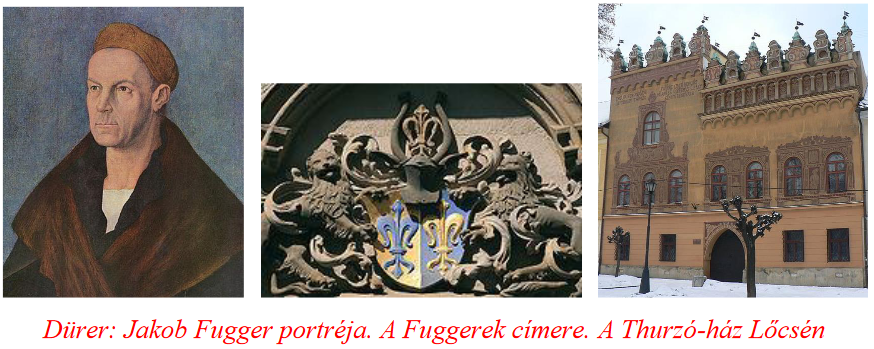
II. Lajos was given ten years
Lajos Jagielló was born prematurely. His doctors were only able to keep him alive by placing the baby in the split stomach of pigs, thus inventing the "medieval incubator". His mother died three weeks after giving birth. His father took great care in raising the otherwise receptive and intelligent child. Even before he ascended the throne, he spoke six languages - Hungarian, Latin, German, Polish, Czech and French. György of Brandenburg taught him the art of shooting weapons and social life (dancing, hunting, enjoying feasts) However, in the context of entertainment, the cousin also taught the young man about things that could not be called moral, which were not accepted in the Hungarian royal court. (For example, Louis appeared naked at the meeting of the royal council.) II. Ulászló's son occupied the Hungarian and Czech thrones at the age of ten, when he succeeded his father.
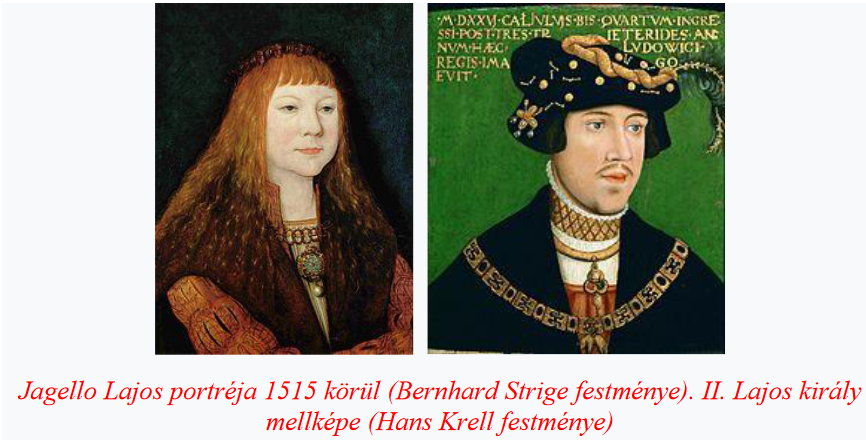
II. who died at the age of sixty. Ulaszló's ten-year-old son, II. Louis followed him on the throne. Although the parliament declared the child to be of age and crowned him, another party split took place in the matter of guardianship. The national party argued that according to the previous laws and the 1505 Parliament decision, foreign interests cannot interfere in the management of the country. II. Lajos Jagielló's accession to the throne was still legal, but he is the last foreigner to ascend the Hungarian throne in the traditional way. Finally, with Szapolyai at the helm, the affairs of the country were handled by the royal council, but its members did not have a unified position either.
In addition to the Czech throne, the young king inherited an empty Hungarian treasury, a nobility that sided with each other, and a poorly equipped and small army. The meetings of the royal council were also characterized by strife. The Hungarian István Báthori the
German György of Brandenburg as the king's trusted and number one adviser. However, in a way that belied his age, Lajos controlled the council meetings with a sure hand, despite the difficulties, and by all indications showed himself to be a talented ruler.
The politics of the Central European region were disrupted by the death of Emperor Miksa in 1519. Palatine Werbőczy tried to make the Czech-Hungarian King, II. Louis on the imperial throne, but there was very little chance of that. Charles V of Habsburg became the new Holy Roman Emperor During the emperor's election, the Fuggers supported Károly with a significant amount, and from then on they had a say in the affairs of the empire.
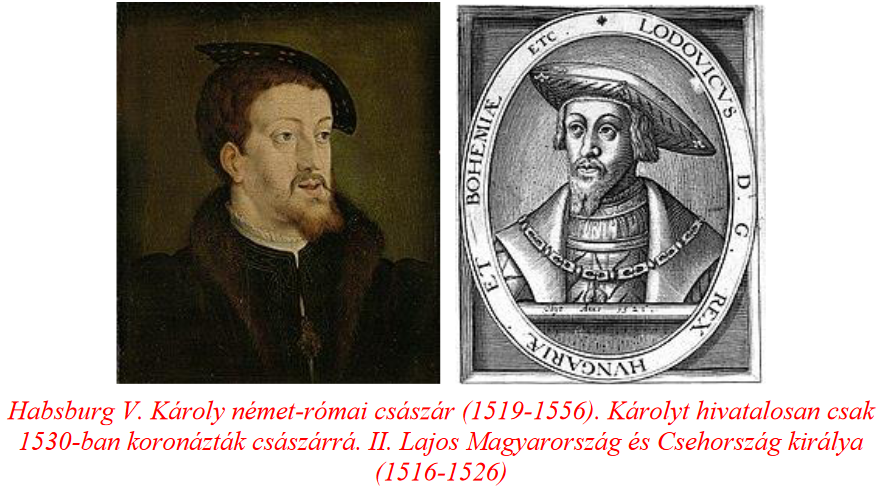
The civil war was in full swing in almost all of Europe when the Turks took Nándorfehérvár, the key to Hungary, in 1521. There was no money to protect the borders, so the Turks pushed further into the interior of the country. János Hunyadi , it proved shameful that the captain of the castle, the then 17-year-old Bálint Török , did not take responsibility for the siege. As long as he was exposed, he was considered a traitor, although he was not the only one responsible for the failure.
II.
Lajos stayed in Bohemia between 1522-1523 to sort out the political, economic, and ecclesiastical problems that had arisen there. When the Turks increasingly threatened Hungary and Europe, the internal contradictions of the continent further weakened the possibility of resistance and cooperation. In an ominous tone, the papal envoy reported to Rome that Hungary was now almost entirely controlled by the Germans. (It is as if the ominous events of the beginning of the 21st century came to life in the knowledge of what happened five centuries earlier. It should be mentioned that Márton Luther in with István Werbőczy in 1523 found himself saying that "the fight against the Turks is a sinful thing , a sin against God". So for him, Islam is more acceptable than the hated Catholic Rome.)
It is true that Pál Tomori still won a victory over a Turkish army along the Száva in 1523, but even this was no longer an obstacle on the way to Mohács.
During these years, Europe's leaders fought each other for money and power almost out of their minds. Fugger Bankház provided support to all parties in financial trouble for a good interest rate. When it pleased, it was for Vienna, but on a given occasion for its opponent.
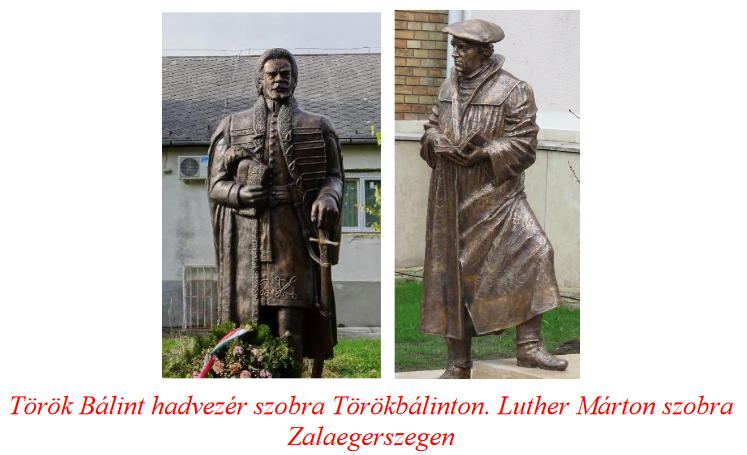
At the Parliament of 1525 – as mentioned earlier – the orders demanded the expulsion of the Fuggers from the country, as well as the replacement of the under-treasurer, Imre Fortunatus (Szerencsés) . In 1492, when Ferdinand of Aragon and Isabella of Castile entered into a marriage and alliance, the Arabs and Jews were expelled from Spain. Several of the latter found refuge in Hungary. Among them was Slomó ben Efrájim , who - under the name Imre Szerencsés - had a great career at the court of the Jagiellonians. The attacks against the administrators of the Buda treasury, primarily Imre Szerencsés, failed due to the intervention of Mária Habsburg As a countermeasure, the Fuggers put Hungary under a financial blockade. Emperor Charles V could not help his brother-in-law either, II. Louis to prepare against the Turks, because he too was in debt to the Augsburg bankers. All this happened at the turn of 1525-1526, when the Turkish armies, led by Suleiman the Magnificent
(To be continued)
Author: Ferenc Bánhegyi
(Cover image source: YouTube)
The parts of the series published so far can be read here: 1., 2., 3., 4., 5., 6., 7., 8., 9., 10., 11., 12., 13., 14., 15., 16., 17., 18., 19., 20., 21., 22., 23., 24,, 25., 26., 27., 28., 29/1., 29/2., 30., 31., 32., 33.

